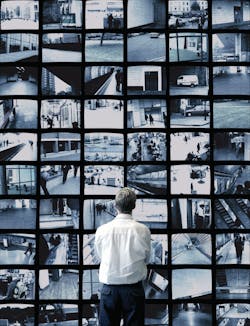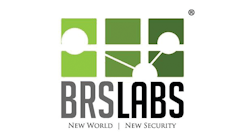Coming to a Transit Agency near You: Behavioral Recognition Technology
The combination of computer vision with machine learning to provide actionable intelligence is the basis of behavioral recognition technology, and BRS Labs has developed the AISight system, an artificial intelligence system that learns normal behaviors in complex environments, and then delivers real-time alerts for unexpected activity. Its processes are patented and automatically observe, analyze and alert without human intervention or custom programming.
"AISight recognizes and adapts to changing conditions much like a human brain does, but without fatigue, boredom or distraction," says David Gerulski, vice president of BRS Labs. "Powered by AISight, an existing video surveillance system is transformed from being merely a source of forensic information about something that has already happened to a source of real-time, actionable intelligence for security personnel and managers, allowing them to deploy personnel and other resources in a far more responsive, efficient and cost-effective way."
Implementation of the system is achieved through "teaching" the system what are typical patterns versus suspicious behavior. Gerulski says that AISight's learning process begins the moment it is connected to a camera feed. Set-up activity is minimal, without the need to program the system with rules or mask off areas likely to generate false positives. As a result, AISight also adjusts automatically to changes within a camera's field of view, such as new construction or a change in camera position.
"AISight can be fully operational and effective in as little as two days," Gerulski says. "With complex situations, the typical time required to reach extremely high levels of familiarity with complex scenes and activities is less than two weeks."
Reliability is among the most important traits of a behavioral recognition system. False alarms can bring into question the overall effectiveness of a system, as well as the technology itself. Keeping a low false positive rate is essential to the success of the system.
"Once AISight is connected to and familiarizes itself with a camera view, it recognizes unexpected behavior with both a very high degree of accuracy and an exceptionally low number of false alarms," says Gerulski. "Older technologies require dampening of system sensitivity in order to avoid excessive numbers of false alerts. AISight never stops learning. If patterns within that camera view change (if three trucks arrive per hour rather than one, or if an unused door begins to be used frequently), AISight learns that this is a new "normal" and rapidly discontinues alerts related to the change."
As with any type of video surveillance, it is important to take privacy issues into account. According to Gerulski, the artificial intelligence within AISight makes no attempt to identify specific persons or objects.
"The system does not recognize individual faces or read vehicle license plates, nor does it determine gender, ethnicity, facial expression or any other biometric detail," he says. "Instead, it teaches itself patterns of behavior by generalizing from what it observes in the video stream. BRS Labs is committed to protecting the privacy rights of every individual, and consciously and deliberately designed the system to protect and respect individual privacy."
Many transit agencies and other organizations are already using AISight. The police department in Tampa, Fla., recently deployed AISight for safety and security monitoring at the upcoming 2012 GOP national convention. "AISight will look for abnormal activities and send real-time alerts to first responders, allowing them to adopt a proactive approach to safety and security that's simply not possible using other video surveillance technologies," says Gerulski.
The San Francisco Municipal Transportation Agency (SFMTA) also chose the AISight system, in order to meet a grant-related deadline for deployment and to improve the overall efficiency of its risk assessment, threat identification and real-time response capabilities. With a workforce of nearly 5,000 individuals, the SFMTA manages that city's entire surface transportation network, including the San Francisco Municipal Railway (Muni). San Francisco operates the largest transit system in Northern California and seventh largest in the U.S., serving more than 200 million customers a year.
"AISight's behavioral recognition technology gives SFMTA the ability to monitor dramatically larger numbers of cameras in real time, while also allocating larger numbers of staff for direct public safety duties," Gerulski says. "As a result, they can react faster and more appropriately to rapidly changing situations, as well as monitor and review vast amounts of historical footage that do not require real-time analysis."




